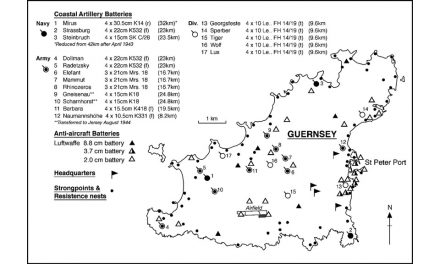Today the Guernsey milk-can has almost disappeared. We still see them of course, but we see little silver ones in jewellers’ shops and bigger ones in copper in old houses and in antique shops. However there are still some people who make them in the old way.
Origins
It’s said that the can came from Normandy in 980 A.D. about the same time the ancestors of the Guernsey cows also arrived (see also our article on The Guernsey Cow). The best known ancestor of the Guernsey cow is the breed”Froment de Leon” and it seems that is still exists in Brittany. The story goes that the Duke of Normandy at that time sent some monks to Guernsey and that they brought some cows with them.
Making the Cans
 However, back to the cans … the cans were made completely by hand and the method of making them has not changed for a thousand years. In order to make a can a sheet of tin or copper is needed and for each piece of the can there is a pattern. The pieces are cut out and then beaten into shape with a hammer on a special block of wood. The bottom and top halves are made separately and finally the two pieces are soldered together. The neck is put on top and then the lid is made. It is the same method for all the cans – be they large or small. It takes five hours to make a two pint can and even the small ones take a long time to make.
However, back to the cans … the cans were made completely by hand and the method of making them has not changed for a thousand years. In order to make a can a sheet of tin or copper is needed and for each piece of the can there is a pattern. The pieces are cut out and then beaten into shape with a hammer on a special block of wood. The bottom and top halves are made separately and finally the two pieces are soldered together. The neck is put on top and then the lid is made. It is the same method for all the cans – be they large or small. It takes five hours to make a two pint can and even the small ones take a long time to make.
After the war, people did not use cans anymore and the dairy didn’t want to use them either.





